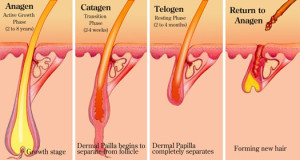
Dear Hair Doctor: What is your medical opinion on replacing traditional shampoo with Apple Cider Vinegar? Can it really help with dandruff and itchy scalp? Are there any benefits for tightly coiled black hair?

I don’t think Apple Cider Vinegar is that useful as a complete replacement for shampoo as it cannot effectively remove oils etc from your hair that well because of its chemical properties. See this blog post from another scientist :
http://www.thenaturalhavenbloom.com/2014/07/can-you-wash-your-hair-with-baking-soda.html
Apple Cider Vinegar has been used traditionally as a final rinse to close the cuticle, make the hair shiny, and to remove any residual soap deposits from the hair. People used to wash their hair with soap (as well as with other naturally saponin rich plants like soapwort and aloe vera). Because Apple Cider Vinegar is acidic it helps to restore the pH of the scalp and hair, and in the process tackles excess flaking (dandruff). For highly textured hair, in women of African descent, it is quite useful as it helps to restore the pH which would be significantly changed once exposed to high pH shampoos and soaps. This renders this hair type rough and make it extremely unmanageable. Once the pH is restored the hair will be more likely to act better.
About
Dr. Llorenia Muir-Green is a practising dermatologist in Jamaica. She has an avid interest in hair and scalp disorders. She is a member of the Medical Association of Jamaica, Dermatology Association of Jamaica and is an Associate Member of the Caribbean Dermatology Association. She was a recipient of the 2013 Fellowship in Hair and Scalp Disorders at the University of British Columbia.
